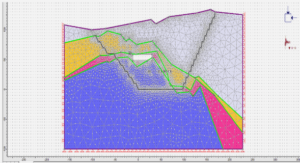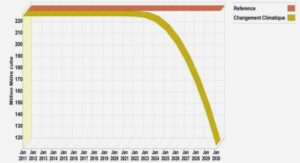Copper has the single greatest impact of all alloying elements on the strength and hardness of aluminum casting alloys, in both as-cast and heat-treated conditions, and at ambient and elevated service temperatures. Copper improves the machinability of aluminum alloys by increasing the matrix hardness, making it easier to generate small cutting chips and fine machined finishes. On the downside, copper reduces the resistance to corrosion and hot cracking, or hot tearing and, in certain alloys and tempers, it increases the stress corrosion susceptibility. Copper is generally used to increase the tensile strength and hardness through heat treatment.
Copper has a maximum solubility in solid aluminum of approximately 5.7 wt% at the eutectic temperature of 548°C,The aluminum rich α-Al phase forms initially during the solidification of hypoeutectic alloys containing less than 33.2% Cu; subsequently the remaining liquid separates at the eutectic temperature into α-Al and the Al2Cu intermetallic phase designated θ. The composition of the θ (Al2Cu) phase ranges from 52.5 to 54.1% Cu corresponding to the eutectic temperature and room temperature, respectively.
Aluminum-copper (Al-Cu) alloys have marginal castability relative to almost any of the alloys containing silicon. These alloys have limited fluidity and require careful gating and generous riser feeding during solidification to ensure casting soundness. In addition, it should be kept in mind that pressure-tight parts of intricate design are difficult to obtain, and their resistance to hot tearing is relatively poor; they are also susceptible to stress corrosion cracking in the fully-hardened condition. As a result, the binary Al-Cu casting alloys are infrequently used, in actual fact, while most commercial alloys are alloyed with other additives, mainly silicon (Si) and magnesium (Mg).
The addition of Si and Mg to Al-Cu based alloys results in the formation of a family of Al-Cu-Si-Mg alloys which has widespread applications, especially in the automotive and aerospace industries based on the superiority of their mechanical properties, castability, weldability and machinability. The metallurgical parameters controlling the quality and mechanical properties of these alloys, namely, heat treatment, addition of alloying elements, and the type and volume fraction of iron-intermetallics formed are discussed in the following subsections.
HEAT TREATMENT OF AL-CU-SI-MG ALLOYS
Heat-treatment is commonly used to improve the mechanical properties of cast aluminum alloys [20]. Heat-treatment improves the strength of aluminum alloys through a process known as precipitation-hardening which occurs during the heating and cooling of an aluminum alloy and in which precipitates are formed in the aluminum matrix [21]. The improvement in properties as a result of heat treatment depends upon the change in solubility of the alloying constituents with temperature.During solution heat treatment, the atoms of the hardening elements (such as Cu and Mg) are put in solid solution, using a solution treatment temperature just below the eutectic temperature, and a solution time long enough to allow solutionizing of the second phase constituents to form a supersaturated solid solution. The next step is quenching, where the alloy casting is rapidly quenched to retain the supersaturated solid solution at room temperature. Finally, the sample is subjected to an aging treatment, during which the hardening precipitates are formed when the sample is heated to a lower temperature than the solution temperature (termed artificial ageing) or left to age at room temperature (called natural aging) .
The main reason for carrying out heat treatment is to obtain an increase in strength. Different heat treatment processes (or tempers) are available, depending on the casting process and desired properties of the alloy. In the T5-treatment, the aging treatment is carried out at temperatures above ambient, typically in the range of 150-200˚C. The heat treatment is carried out at these relatively low temperatures to eliminate growth. The T5 temper is also used to stabilize the castings dimensionally (improving the mechanical properties). The T6 treatment is the one most commonly used for Al-Cu-Si-Mg casting alloys with the intent of obtaining the best compromise between strength and ductility [11, 22]. The stabilization T7 temper is conducted at higher aging temperatures (200-240°C) than the T6 temper (150-180°C), causing overaging and a consequent reduction in the hardening effect. The T7 treatment is usually carried out to improve some specific characteristic such as corrosion resistance and/or to increase the stability and performance of the casting at elevated temperatures [19].
CHAPTER 1 DEFINING THE PROBLEM |




